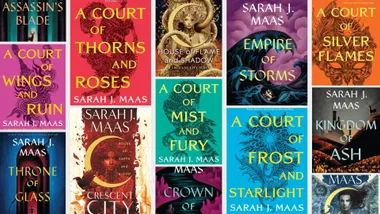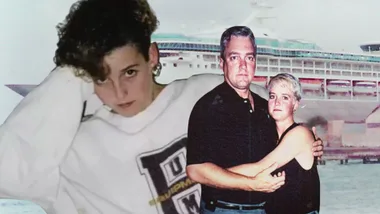Warning, Stillwater spoilers ahead.
2021 has seen its fair share of true stories turned into major film and television productions. Think crime-drama The Serpent, fashion-filled masterpiece Halston and even the creepy horror Aftermath.
Another blockbuster to add to the list is Stillwater, which is loosely based on the real life story of Amanda Knox.
But while the film itself isn’t directly centred on Amanda herself, the narrative seems to reference aspects of her story through the dramatised lens of Bill (played by Matt Damon), the father of a young woman named Allison (Abigail Breslin) who has been accused and imprisoned for the murder of her roommate.
The writer and director Tom McCarthy confirmed the film is indeed inspired by Knox’s story, but just how accurate is it?
Here, we look at the true story that inspired Stillwater and dissect the fact from fiction.

Is Stillwater based on a true story?
The short answer is yes, however it pays to note that the premise of Stillwater was merely inspired by the murder investigation surrounding Amanda Knox.
Writer Tom McCarthy, who is also the brains behind the acclaimed true story film adaptation Spotlight, affirmed that while Stillwater is “directly inspired” by Knox, the word “inspired” means not every little detail is an accurate depiction. Essentially, McCarthy had a little wiggle room to dramatise things a little more.
Interestingly, Amanda herself commented on the film when the first trailer dropped, explaining that she had no input in the production.
“The way that Stillwater has chosen to represent my story in their story is that the Amanda Knox character has special knowledge and was at the very least indirectly involved in the killing of the Meredith Kercher character, which is a myth,” she told Today, Explained.
Of course, a big part of the narrative centres on a murder, however an overriding theme of the film is actually about the relationship between father and daughter.
What is the plot of Stillwater?
As mentioned, the film delves into the life of Bill, who travels to France to battle the country’s legal system that will not help his daughter after she is imprisoned for murdering her roomate. While there, Bill meets a Frenchwoman whom he strikes up a romance with, he also becomes close with her daughter.
The narrative explores their relationships alongside an intense character arch for Bill, who has a criminal background but appears to have grown a lot as a parent since Allison’s childhood.
As the film comes to a close, Bill finds someone who could prove that his daughter is innocent, however we later find out that Allison had actually paid the man to “get rid” of her roommate, which is confirmed by his daughter.
What actually happened to Amanda Knox?
The real life story of Amanda Knox, who spent almost four years in Italian prison after being accused of murdering her roommate Meredith Kercher, has several major differences to the film Stillwater.
Aged 20 at the time, Amanda had spent the night with her boyfriend Raffaele Sollecito when she returned to her apartment to find blood in the bathroom. Her roomate’s bedroom door was locked. When the police were called, they kicked in the door to find Kercher dead with her body covered by a bloody duvet.
In the initial investigation, suspicions were raised at Knox’s delay in raising the alarm when she returned to her home. Around the same time, another person’s DNA was found at the scene via forensics: Rudy Guede. He later admitted to being at the murder scene, but at the time, he said he didn’t kill Kercher.
At the closure of the subsequent first trial, Knox and her boyfriend were convicted and sentenced to 26 and 25 years in prison. In 2010, their lawyers called for an appeal, with a new witness coming forward claiming that while in prison, Guede had said Amanda and Raffaele were not involved in the murder.
They were subsequently acquitted, but not long after she’d returned home to the US where Knox began studying once again, the acquittal was overturned. Both she and Raffaele were ordered to stand trial for the murder once again by the Italian Supreme Court.
In 2013, the retrial began, and this time a new piece of evidence was brought forward—a kitchen knife that prosecutors believed was used to kill Kercher. Traces of Amanda’s DNA was found on the knife, however her legal team argued that she’d used it exclusively for cooking purposes.
In a shock decision, Amanda and Raffaele were again found guilty. Amanda said at the time: “Having been found innocent before, I expected better from the Italian justice system. The evidence and accusatory theory do not justify a verdict of guilt beyond a reasonable doubt.”
Then, a final twist—in March 2015, the Supreme Court of Italy overturned the convictions of both parties made a year prior. Amanda was free to go.
She has since become an author, activist and a journalist and penned the memoir: Waiting To Be Heard.










